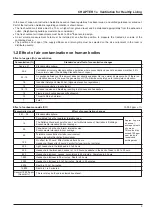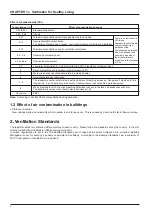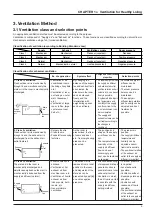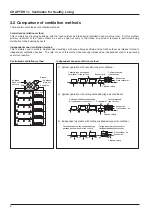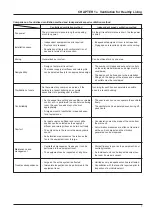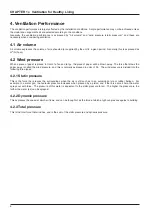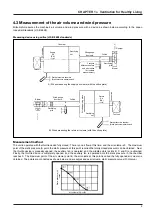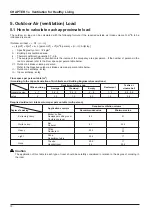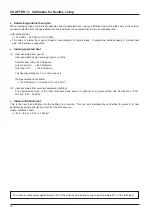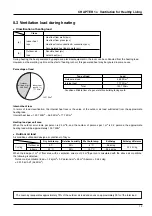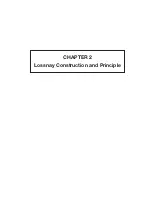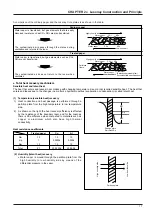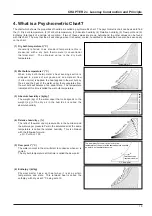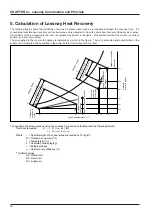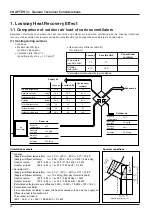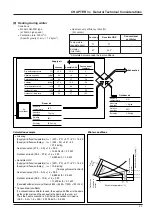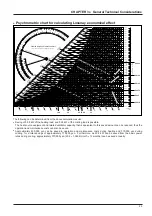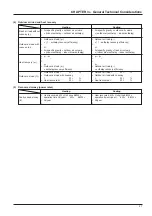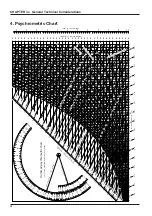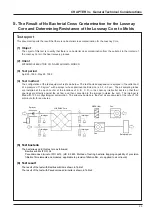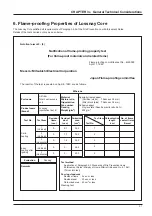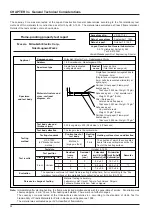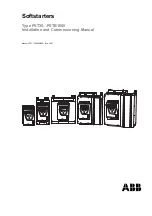
17
CHAPTER 2
●
Lossnay Construction and Principle
A comparison of the ordinary paper and the Lossnay Core plates is as shown in the table.
Ordinary paper
Water vapor is transferred, but gas elements that are easily
dissolved in water such as CO
2
, NO
2
are also transferred.
The contaminated air passes through the plates during
ventilation and returns to the room.
Treated paper
Water vapor is transferred, but gas elements such as CO
2
,
NO
2
are not transferred.
The contaminated air does not return to the room when
ventilated.
Highly humid air
Water vapor
Water vapor
CO
2
NO
2
CO
2
NO
2
CO
2
NO
2
Water vapor
Water vapor
Treatment
(Selective permeable film)
(Incombustible specifications)
Low humid air
Highly humid air
Cellulose
fibers
Low humid air
●
Total heat recovery mechanism
Sensible heat and latent heat
The heat that enters and leaves in accordance with changing temperature (rise or drop) is called sensible heat. The heat that
enters and leaves due to the changes in a matter’s physical properties (evaporation, condensation) is called latent heat.
(1)
Temperature (sensible heat) recovery
1)
Heat conduction and heat passage is performed through a
partition plate from the high temperature to low temperature
side.
2)
As shown on the right, the heat recovery efficiency is affected
by the resistance of the boundary layer, and for the Lossnay
there is little difference when compared to materials such as
copper or aluminium which also have high thermal
conductivity.
Heat resistance coefficients
t1
t2
Ra1
Ra2
Rp
Partition plate
Ra1+Ra2
»
Rp
Treated paper
Cu
Al
Ra
1
10
10
10
Rp
1
0.00036
0.0006
Ra
2
10
10
10
Total
21
20.00036
20.0006
(2) Humidity (latent heat) recovery
●
Water vapor is moved through the partition plate from the
high humidity to low humidity side by means of the
differential pressure in the vapor.
High humidity side
Low humidity side
Partition plate
Summary of Contents for Lossnay PZ-41SLB-E
Page 4: ...CHAPTER 1 Ventilation for Healthy Living Lossnay Unit ...
Page 17: ......
Page 18: ...CHAPTER 2 Lossnay Construction and Principle ...
Page 24: ...CHAPTER 3 General Technical Considerations ...
Page 41: ......
Page 42: ...CHAPTER 4 Characteristics ...
Page 56: ...53 CHAPTER 4 Characteristics ...
Page 57: ...54 CHAPTER 4 Characteristics ...
Page 59: ......
Page 60: ...CHAPTER 5 System Design Recommendations ...
Page 68: ...CHAPTER 6 Examples of Lossnay Applications ...
Page 83: ......
Page 84: ...CHAPTER 7 Installation Considerations ...
Page 88: ...CHAPTER 8 Filtering for Freshness ...
Page 96: ...CHAPTER 9 Service Life and Maintenance ...
Page 98: ...CHAPTER 10 Ventilation Standards in Each Country ...
Page 101: ......
Page 102: ...CHAPTER 11 Lossnay Q and A ...
Page 108: ...Lossnay Remote Controller ...
Page 109: ......
Page 197: ...MEMO ...
Page 198: ...Y04 002 Jul 2004 MEE ...

